.png)
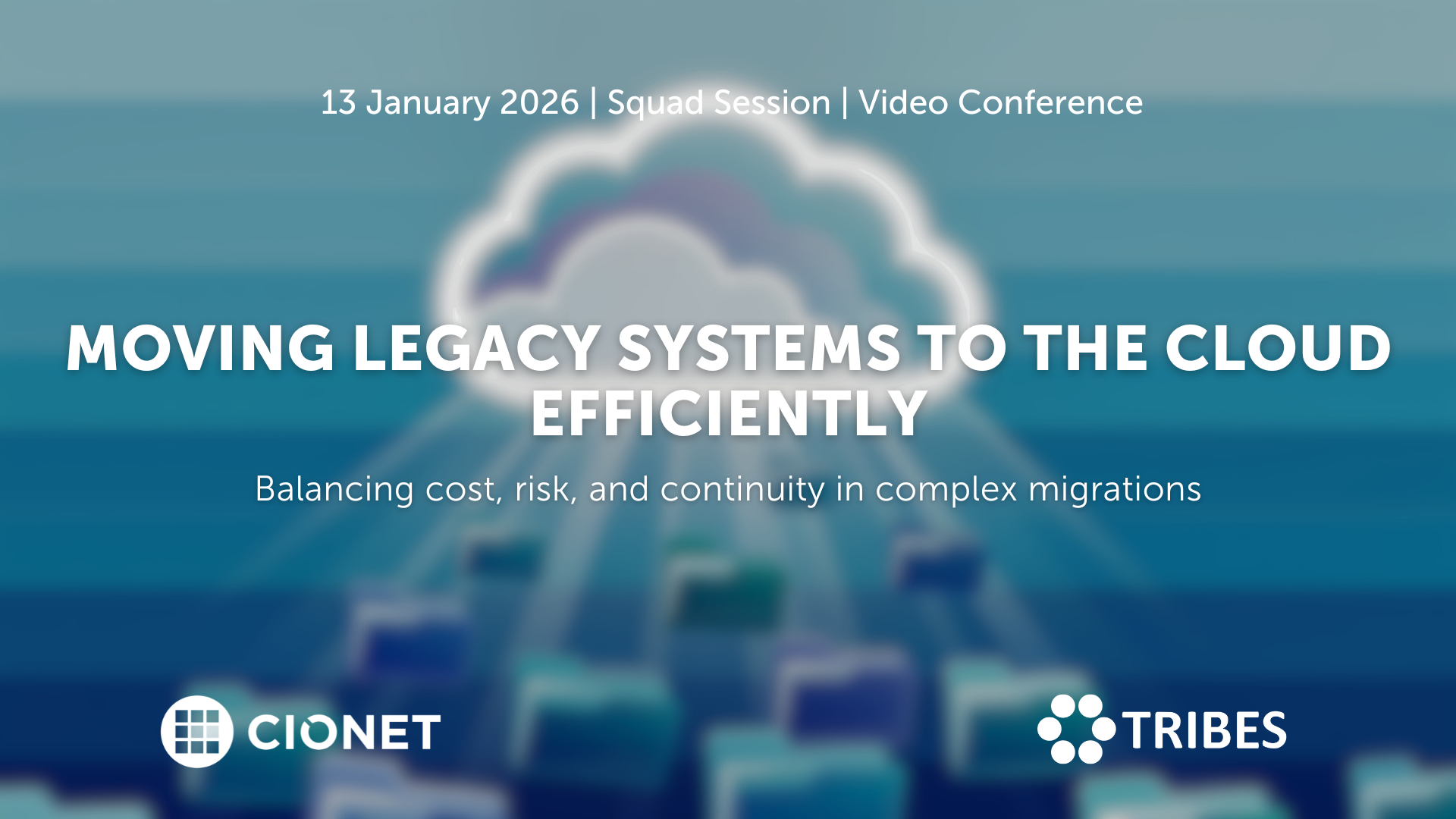
Belgium 13-1-26 Squad Only Virtual english
Migrating legacy systems to the cloud remains one of the toughest balancing acts in IT. Every choice affects stability, cost, and trust at once, and what starts as a modernisation effort quickly turns into a negotiation between ambition and reality. Suddenly budgets rise, dependencies appear late, and timelines tighten as old architectures collide with new expectations. In the end, success depends on sequencing, ownership, and aligning business priorities with infrastructure limits, and not only on technical readiness. Making it work requires more than a plan on paper. Knowing which systems genuinely belong in the cloud, which can wait, and which should stay put shapes the entire roadmap and defines its success. Each refactoring decision sets the level of future flexibility, but it also drives cost and risk. The trade-offs between speed, sustainability, and resilience only become clear once migration begins and pressure builds. Let’s discuss how to plan migrations that stay on track, manage hidden dependencies, and handle downtime with confidence. Let’s also discuss how governance, testing, and vendor coordination keep progress visible and credible. Are you in? A closed conversation for those who turn cloud migration from a disruption into a long-term advantage.
Read More.png)
Belgium 20-1-26 All Members Physical english
CIOs today are being judged less as technology leaders and more as portfolio managers. Every euro is under scrutiny. Boards and CFOs demand lower run costs, higher efficiency, and clear ROI from every digital initiative. Yet, they also expect CIOs to place bets on disruptive technologies that will keep the enterprise competitive in five years. This constant tension is redefining the role. In this session, we go beyond FinOps and cost reporting to tackle the strategic financial dilemmas CIOs face.
Read More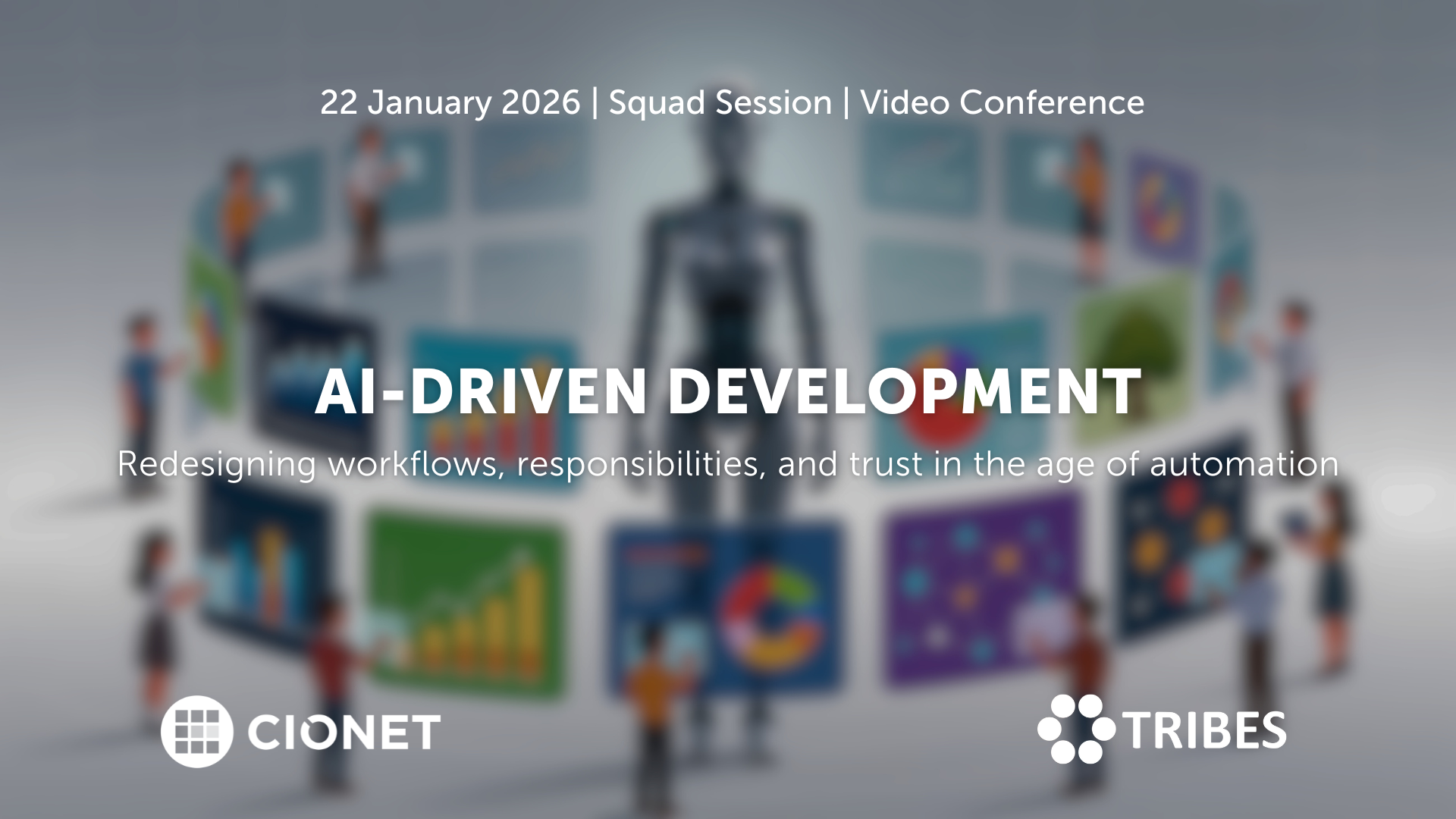
Belgium 22-1-26 Invitation Only Virtual english
AI coding assistants entered development teams quietly, but their impact grows by the day. What started as autocomplete now shapes architecture decisions, documentation, and testing. And when productivity gains are visible, so are new risks: security blind spots, uneven quality, and the slow erosion of shared standards. Teams move faster, but not always in the same direction. The challenge has become integration rather than adoption. And new questions have risen: how do you blend automation into established practices without losing oversight? When is human review still essential, and what should the rules of collaboration between developer and machine look like? As AI tools learn from proprietary code, where do responsibility and accountability sit? Let’s talk about how to redefine those workflows, balancing creativity with control, and protecting code quality in a hybrid human-AI environment. A closed conversation on where AI accelerates progress, where it introduces new debt, and how development culture must evolve to stay credible.
Read More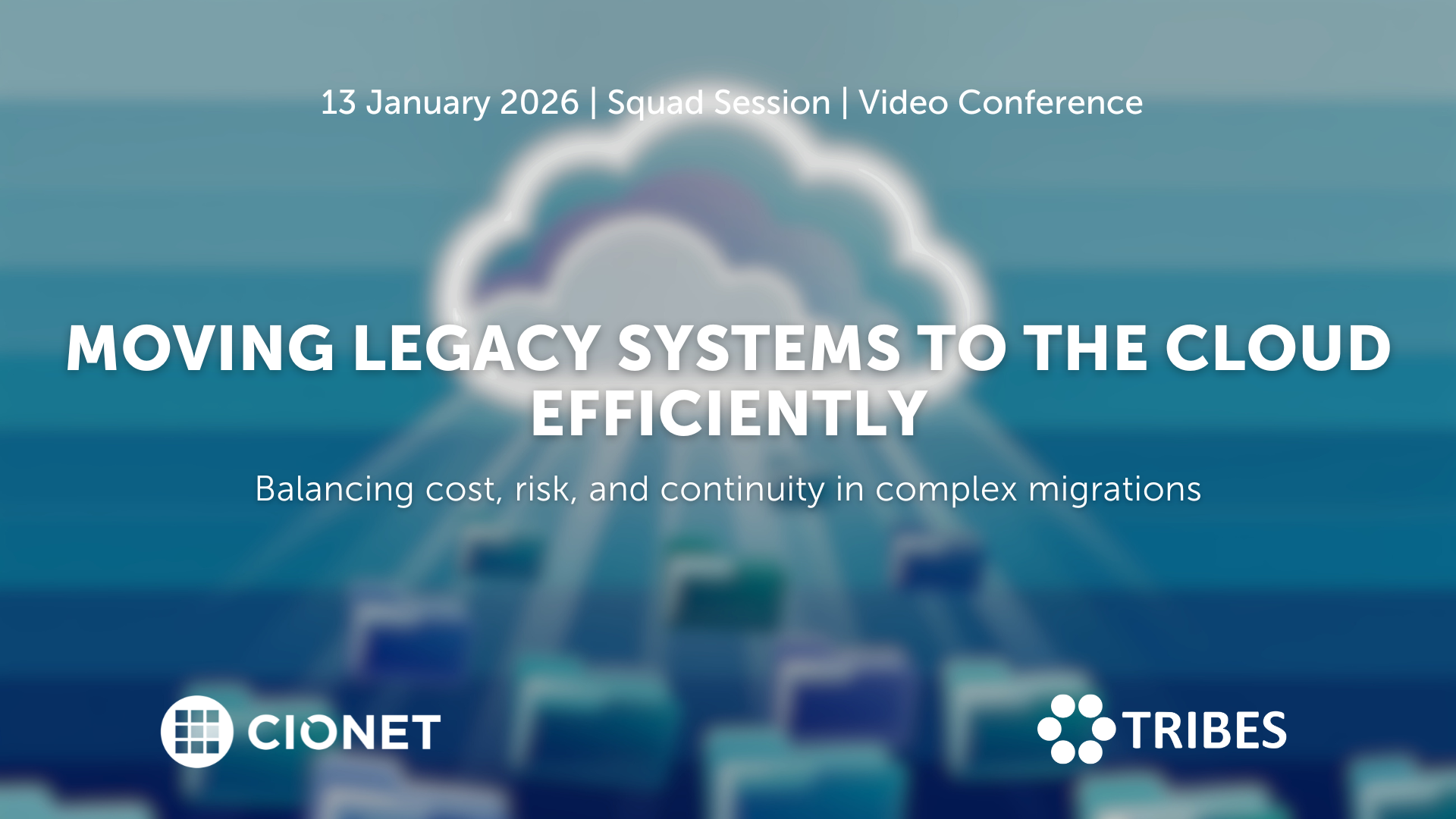
January 13, 2026 Squad Session Invitation Only Virtual english
Migrating legacy systems to the cloud remains one of the toughest balancing acts in IT. Every choice affects stability, cost, and trust at once, and what starts as a modernisation effort quickly turns into a negotiation between ambition and reality. Suddenly budgets rise, dependencies appear late, and timelines tighten as old architectures collide with new expectations. In the end, success depends on sequencing, ownership, and aligning business priorities with infrastructure limits, and not only on technical readiness. Making it work requires more than a plan on paper. Knowing which systems genuinely belong in the cloud, which can wait, and which should stay put shapes the entire roadmap and defines its success. Each refactoring decision sets the level of future flexibility, but it also drives cost and risk. The trade-offs between speed, sustainability, and resilience only become clear once migration begins and pressure builds. Let’s discuss how to plan migrations that stay on track, manage hidden dependencies, and handle downtime with confidence. Let’s also discuss how governance, testing, and vendor coordination keep progress visible and credible. Are you in? A closed conversation for those who turn cloud migration from a disruption into a long-term advantage.
Read More
January 22, 2026 Squad Session Invitation Only Virtual english
AI coding assistants entered development teams quietly, but their impact grows by the day. What started as autocomplete now shapes architecture decisions, documentation, and testing. And when productivity gains are visible, so are new risks: security blind spots, uneven quality, and the slow erosion of shared standards. Teams move faster, but not always in the same direction. The challenge has become integration rather than adoption. And new questions have risen: how do you blend automation into established practices without losing oversight? When is human review still essential, and what should the rules of collaboration between developer and machine look like? As AI tools learn from proprietary code, where do responsibility and accountability sit? Let’s talk about how to redefine those workflows, balancing creativity with control, and protecting code quality in a hybrid human-AI environment. A closed conversation on where AI accelerates progress, where it introduces new debt, and how development culture must evolve to stay credible.
Read More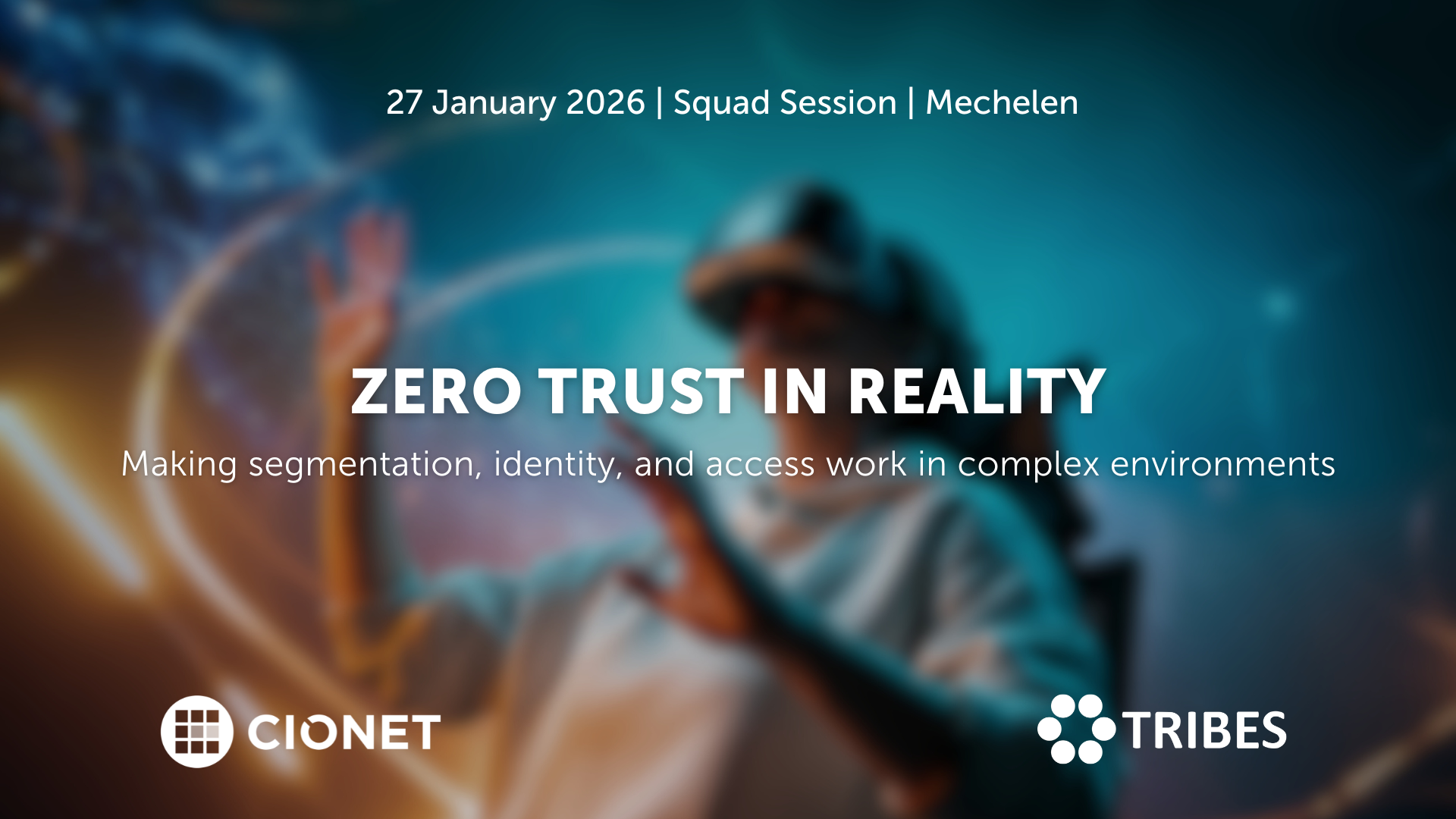
January 27, 2026 Squad Session Invitation Only Physical english
Zero Trust sounds simple on paper: trust no one, verify everything. But once you start implementing it, the fun begins. Legacy systems, hybrid networks, and human habits don’t read the manual. The idea is solid; the execution, not so much.
Read More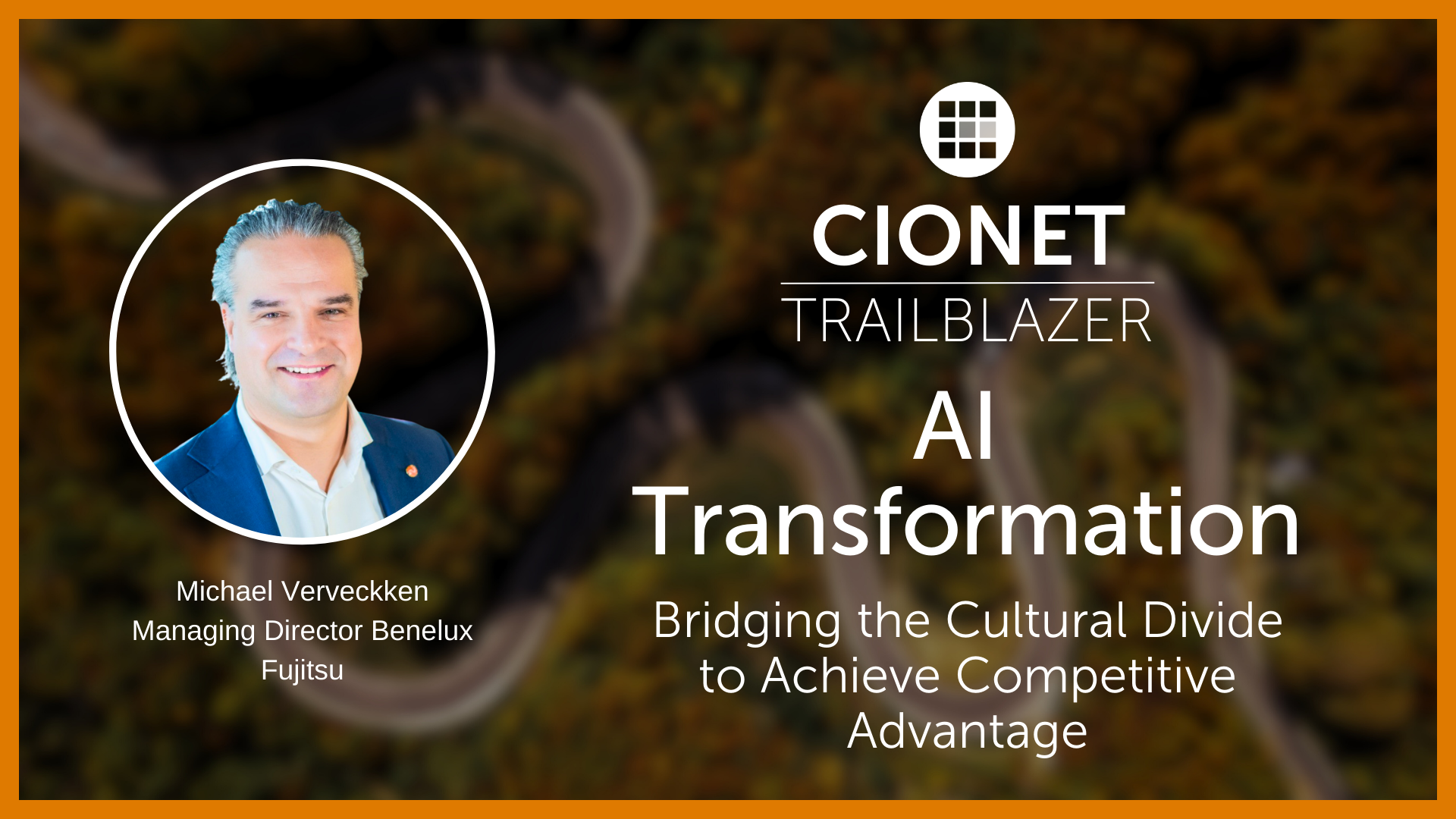
CIONET Trailblazer: AI Transformation: Bridging the Cultural Divide to Achieve Competitive Advantage
Published on: December 17, 2025 @ 9:16 AM
AXA Switzerland adopts agile app dev with Red Hat OpenShift
AXA Switzerland, part of one of the world’s largest insurance providers, sought to transform its IT and work approach with agile development practices and cloud computing technology. By creating a multicloud application environment with Red Hat® OpenShift®, AXA increased application deployments by 33% in just one year.
Question: What was the specific business challenge or opportunity you faced? What are your market pressure & demands?
Answer: Andreas Maier, CIO, AXA Switzerland: AXA Switzerland is one of the larger components of the AXA group and is the market leader in the insurance business in Switzerland. We started our transformation four years ago. On this challenging path we already achieved some important milestones: first and foremost an agile transformation. We completely reshaped the way we develop software together with our business, from a pure IT setup with developer teams into a completely agile setup with 78 product teams today. We integrated product teams with business and IT. We have a new culture.
Question: What are the market challenges for AXA?
Answer: AXA identified a long time back the potential of the cloud technology and decided to implement a public managed cloud strategy enabled by the Microsoft Azure and Google Cloud Platform [GCP]. The regulatory requirements which we need to comply with lead us to a strategy of investing in partners which allow us to stay flexible and minimize the vendor lock-in effects. Red Hat is such a partner which enables us to execute our strategy in a very efficient way.
Question: Where are you on this journey today?
Answer: Today, we continue to transform toward our next milestone: data, technology and innovation excellence in our product teams. Part of this journey, Red Hat is one of the providers who supports us in renewing our technology stack. With Red Hat® OpenShift® on top of an IBM technology stack, we have in recent years migrated 100% of our decentralized application estate into partially public and mostly private cloud. Starting in 2022, we will move to public clouds in Switzerland because of regulatory requirements. We will use the Red Hat solutions there too and build on our partnership together.
Question: Why did you choose Red Hat? Why open source?
Answer: Five years ago, we started analyzing the market for existing solutions for containerization. We identified Red Hat OpenShift as a leading enterprise Kubernetes service with an open source approach. The core values of our agile transformation depend on co-creation, openness, feedback, and extreme programming principles. We chose Red Hat OpenShift because of the quality and maturity of the solution, but also the premium support and the talent behind it. Today, we leverage developer and operational centric tools for rapid application development, deployment, life cycle management and full stack support. So we’re using the full stack of Red Hat technology.
Question: How did Red Hat support you through your transformation and multicloud strategy? What benefits do you see from working with Red Hat?
Answer: Our engineers benefit from working with Red Hat OpenShift every day. The developers and operations engineers’ lives became much easier. Red Hat OpenShift enables our developers to focus on coding and innovating. They don’t have to worry about day to day work, resilience, stability, deployment, integrating or testing. That’s taken from our shoulders, so we can focus much more on solving the customer’s problems.
Question: Are there any additional advantages?
Answer: We are working more efficiently on the existing private and managed public cloud infrastructure, while the operations engineers are able to ensure a customer-oriented availability for the applications deployed in the cloud and at the same time scale up very easily the number of hosts on which an application runs.
At the same time, with Red Hat OpenShift, we are able to comply with local financial regulatory requirements and stay as flexible as possible, in order to minimize migration efforts in the event of having to change one of our public cloud vendors.
Question: Can you describe the benefits the Red Hat solution has brought to AXA Switzerland?
Answer: Among others, we now have a much faster time to market for our delivery. I’m now in a position to measure the amount of software deliverables to the business. In 2019, we delivered 33% more software to the business compared to 2018. Thanks to the developer support that we have through Red Hat, I expect that we will be able to develop software much faster than before.
Additionally we profit from a growing number of applications as well as increased employee productivity. Red Hat technology enabled us to adopt a multicloud strategy for more financial transparency and business flexibility.
Question: Have Red Hat and open source influenced your company culture and workflows?
Answer: Certainly. AXA Switzerland has a very open and inclusive culture. Based on Red Hat enterprise open source technologies and agile principles, we developed a new cultural mindset which promotes co-creation and collaboration, information exchange, full transparency and constructive feedback. Now, product teams and the business work together on customer solutions, which has tremendously increased the joint ownership feeling. Five years ago we spoke about business and IT, and now we speak about demand and delivery, customer value and cycle time. We speak a common language, which makes me very happy. This open source community culture should be embraced by the whole industry. Insurance companies need to become more open to collaboration. Containerization is a big enabler for being able to connect with partners much more than before. We believe that the power of innovation lies in co-creation, open source collaboration and continuous improvement.
Question: How important is the ability to innovate in the future?
Answer: AXA Switzerland is the number one insurer in Switzerland with a market share of 24 percent and above average growth. In terms of innovation, we’re perceived as one of the digital leaders by our customers. This is important for us to differentiate. AXA aims to transform from payer to partner: instead of only paying for damages, we want to become a partner for customers. Instead of just selling insurance services, we want to partner for prevention or back-to-business services to help our customers live a better life. That’s our vision.
Question: Does your Red Hat solution contribute to future innovation?
Answer: With our strategy we intend to achieve very ambitious goals: be a market leader in all business lines, double the number of relevant customer interactions and enlarge our mobility, SME [subject-matter expert], and life & health ecosystems, with new third-party services, which go beyond the insurance business. The key level of that is to grow and innovate fast and provide services that our competitors don’t. Hence, key levers of our strategy are time to market and scalability of our services and products. We strongly believe that Red Hat OpenShift product fully supports us in executing our vision. Shifting development power from technology work to innovation work is what we want to do.
Question: What is the next big challenge in your business?
Answer: We now have an application landscape of about 330 applications, including 20 SAP applications and about 30 mainframe applications. About 190 are decentralized applications and the majority of them are Java™- and Linux®-based. Today, we have very few applications in the public cloud, because we need to keep customer-specific and sensitive data within the jurisdiction of Switzerland. That’s why we currently have an on-premise cloud with Red Hat OpenShift on top.
The next big challenge we will undergo in 2021 is the migration of all our applications—with the exception of the SAP systems—from the private cloud into the public managed clouds which have datacenters in Switzerland, Microsoft Azure, and GCP. We are aiming to complete this migration by the end of 2023.
Question: How is Red Hat helping you with this challenge?
Answer: With Red Hat OpenShift, we can migrate our application stacks in the same container from on-premise to the public cloud with very little effort. This is a great opportunity for improving our time to market, for resilience and stability of our applications, and for focusing on innovation, while gaining financial transparency and business flexibility. We will start with this next year, so by the end of 2023 we don’t need our own datacenter anymore. It’s not a core competence for an insurance company to run technology. We should have a core expertise on delivering customer value fast. That’s why we need the help of Red Hat.
409 Views 1 Likes Read More
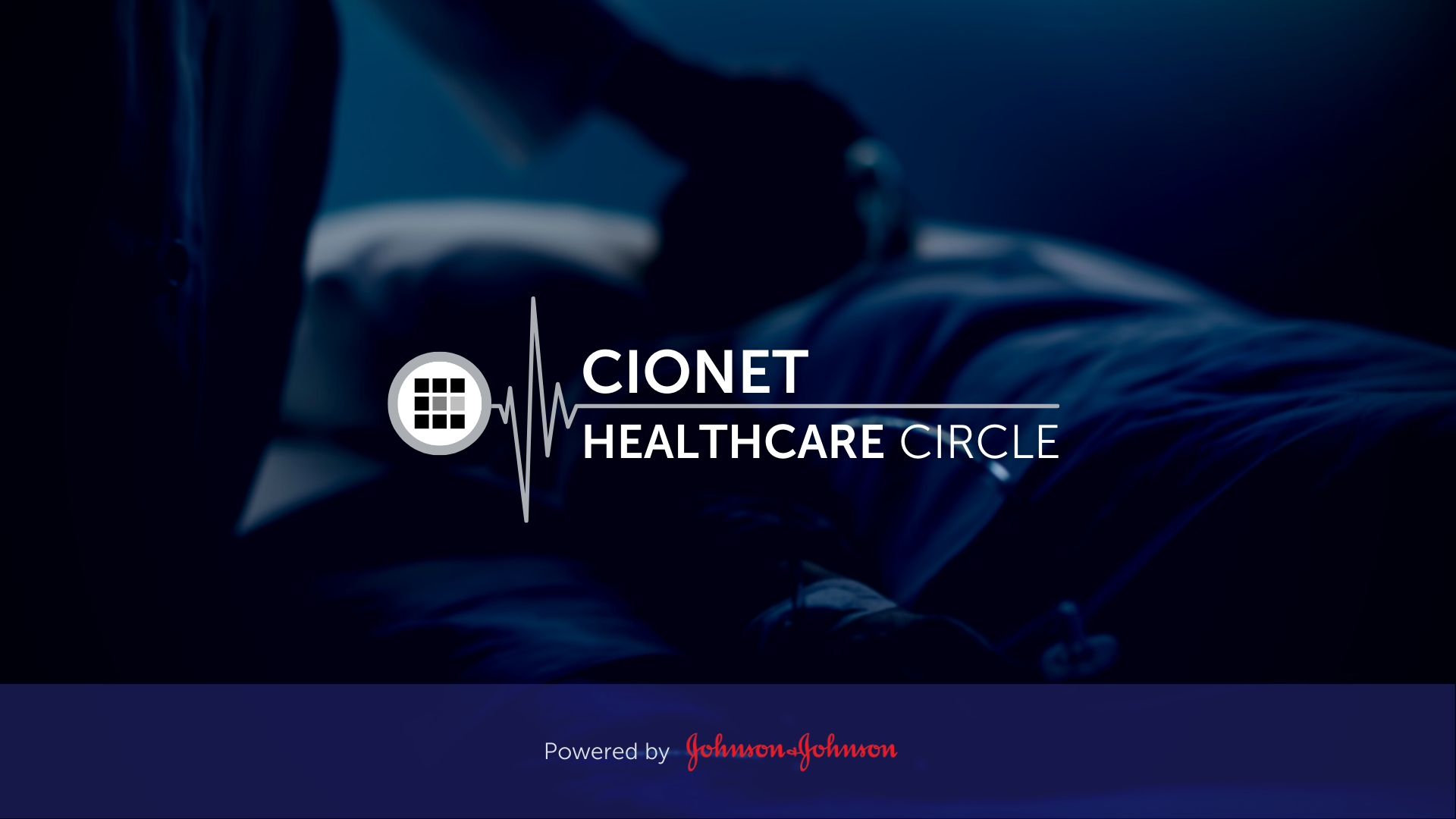
Digital Transformation is redefining the future of health care and health delivery. All stakeholders are convinced that these innovations will create value for patients, healthcare practitioners, hospitals, and governments along the patient pathway. The benefits are starting from prevention and awareness to diagnosis, treatment, short- and long-term follow-up, and ultimately survival. But how do you make sure that your working towards an architecturally sound, secure and interoperable health IT ecosystem for your hospital and avoid implementing a hodgepodge of spot solutions? How does your IT department work together with the other stakeholders, such as the doctors and other healthcare practitioners, Life Sciences companies, Tech companies, regulators and your internal governance and administrative bodies?
Read More
The Telenet Business Leadership Circle powered by CIONET, offers a platform where IT executives and thought leaders can meet to inspire each other and share best practices. We want to be a facilitator who helps you optimise the performance of your IT function and your business by embracing the endless opportunities that digital change brings.
Read More
Découvrez la dynamique du leadership numérique aux Rencontres de CIONET, le programme francophone exclusif de CIONET pour les leaders numériques en Belgique, rendu possible grâce au soutien et à l'engagement de nos partenaires de programme : Deloitte, Denodo et Red Hat. Rejoignez trois événements inspirants par an à Liège, Namur et en Brabant Wallon, où des CIOs et des experts numériques francophones de premier plan partagent leurs perspectives et expériences sur des thèmes d'affaires et de IT actuels. Laissez-vous inspirer et apprenez des meilleurs du secteur lors de sessions captivantes conçues spécialement pour soutenir et enrichir votre rôle en tant que CIO pair. Ne manquez pas cette opportunité de faire partie d'un réseau exceptionnel d'innovateurs numériques !
Read More
CIONET is committed to highlighting and celebrating female role models in IT, Tech & Digital, creating a leadership programme that empowers and elevates women within the tech industry. This initiative is dedicated to showcasing the achievements and successes of leading women, fostering an environment where female role models are recognised, and their contributions can ignite progress and inspire the next generation of women in IT. Our mission is to shine the spotlight a little brighter on female role models in IT, Tech & Digital, and to empower each other through this inner network community.
Read More


-Apr-01-2022-10-58-34-57-AM.png)



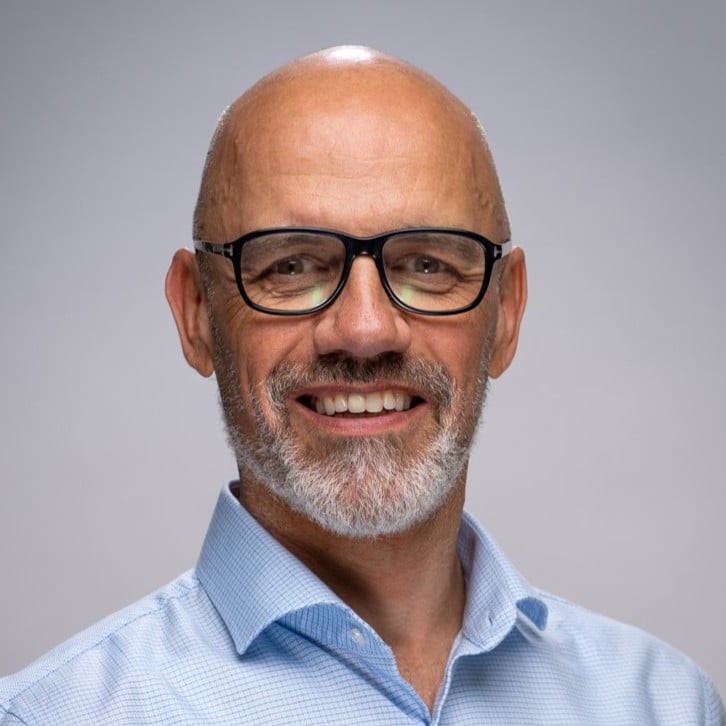

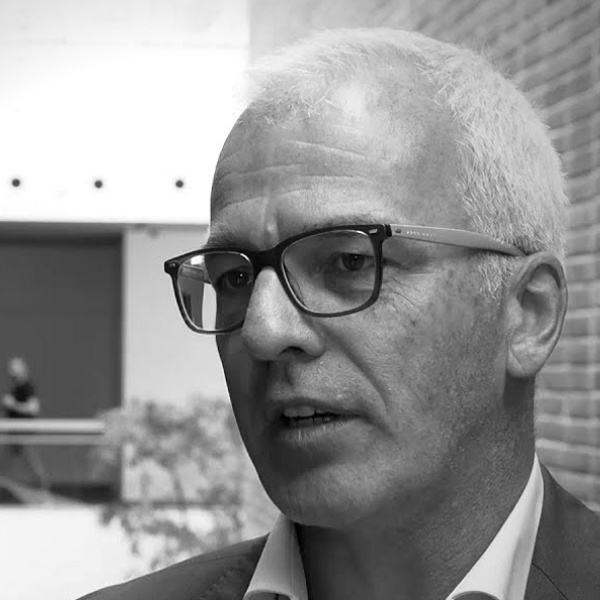





-Dec-13-2023-10-53-15-5032-AM.png)




-Jun-12-2023-01-23-11-7540-PM.png)





-Apr-01-2022-10-58-34-68-AM.png)










-2.jpg)




-Sep-01-2022-02-47-55-60-PM.png)
-Nov-22-2023-08-56-42-6802-AM.png)
.png)

Would you like to know more about CIONET Belgium, membership or partnership opportunities? Do you have feedback or any other question? Send us a message!
You can either send us a registered handwritten letter explaining why you'd like to become a member or you can simply talk to us right here!